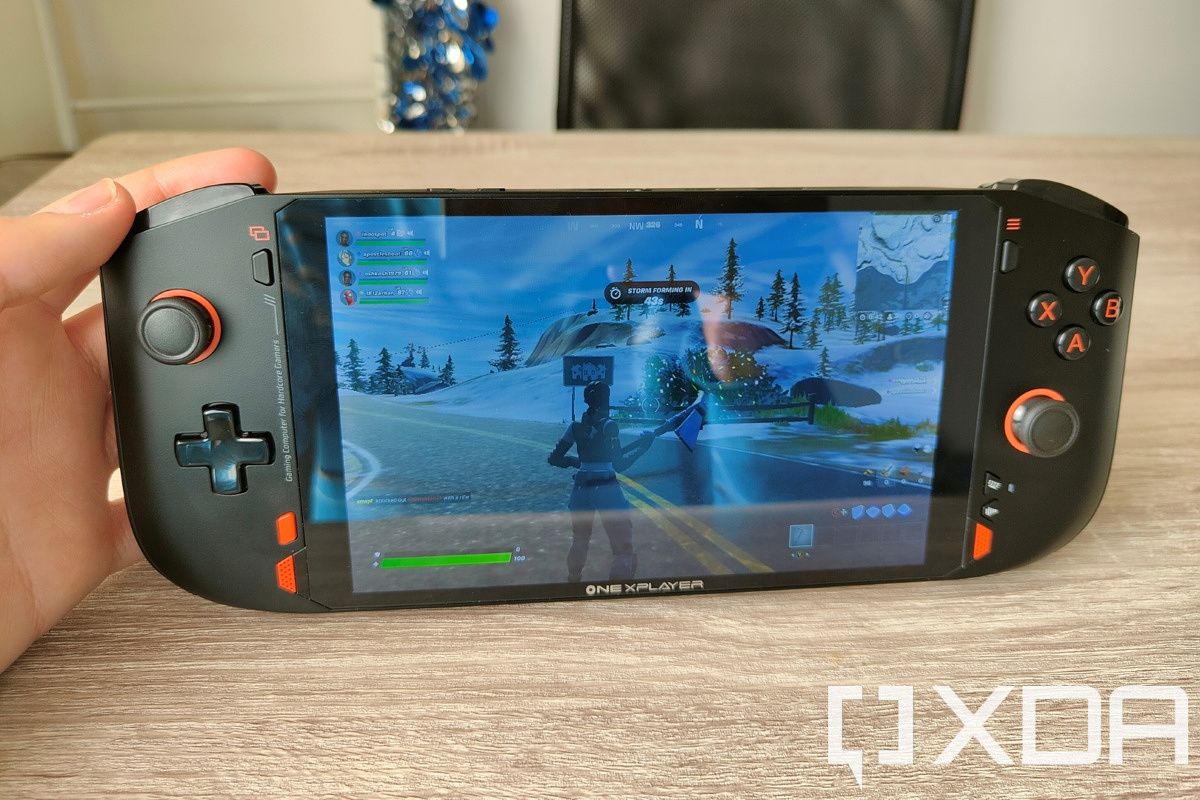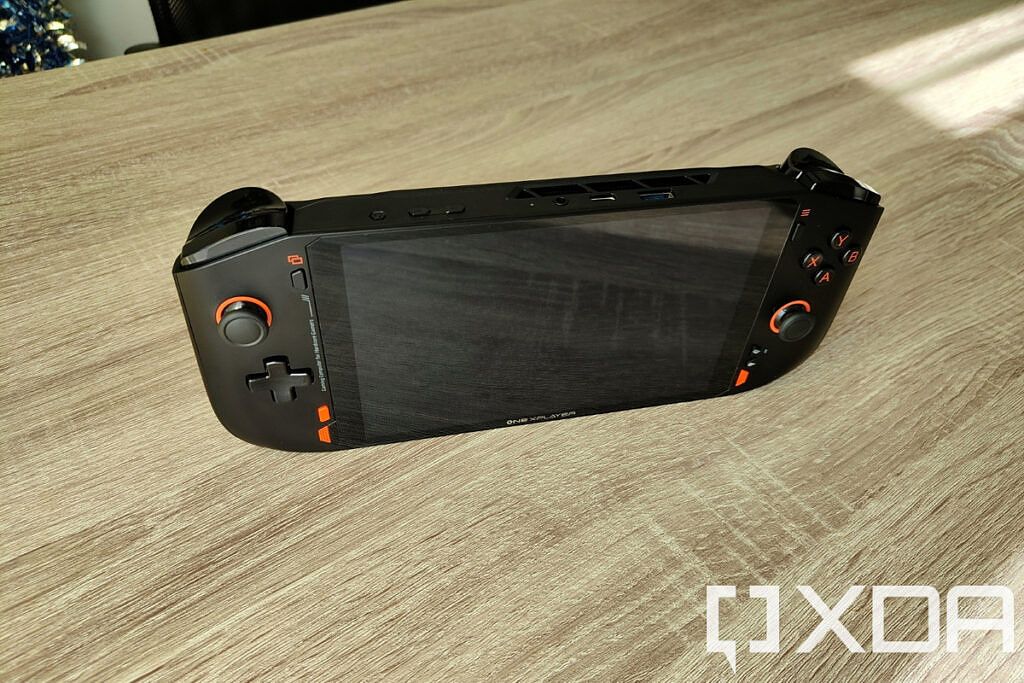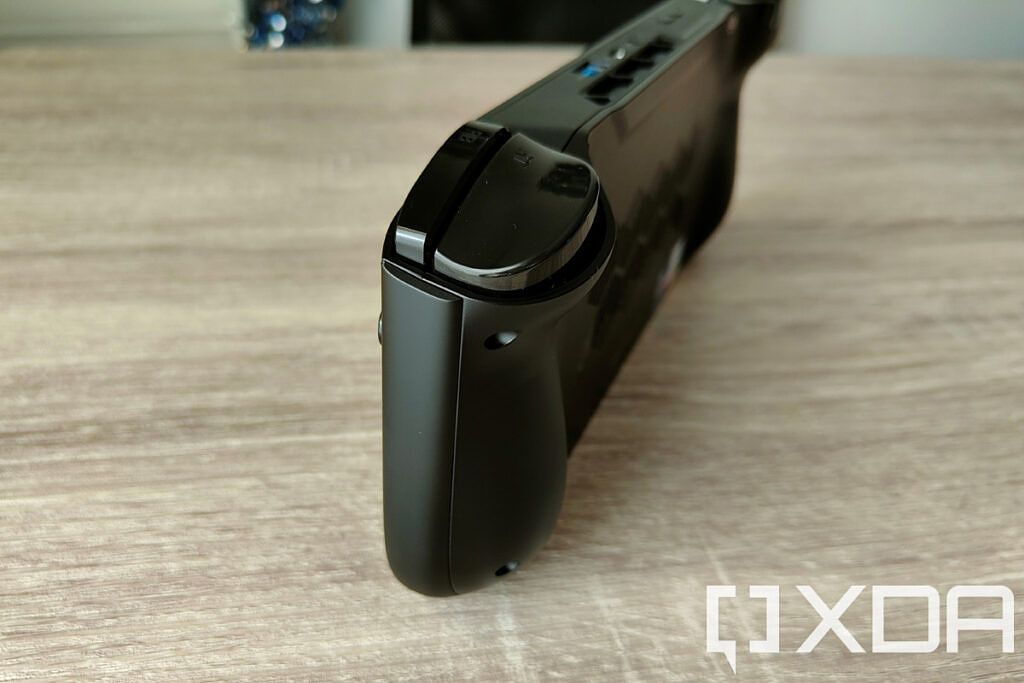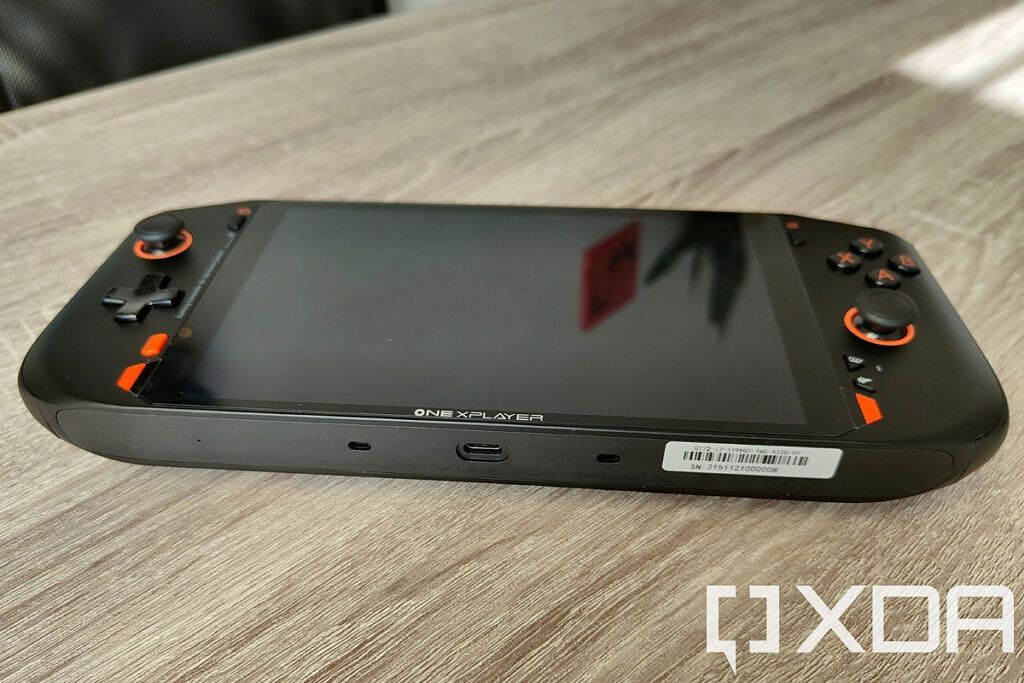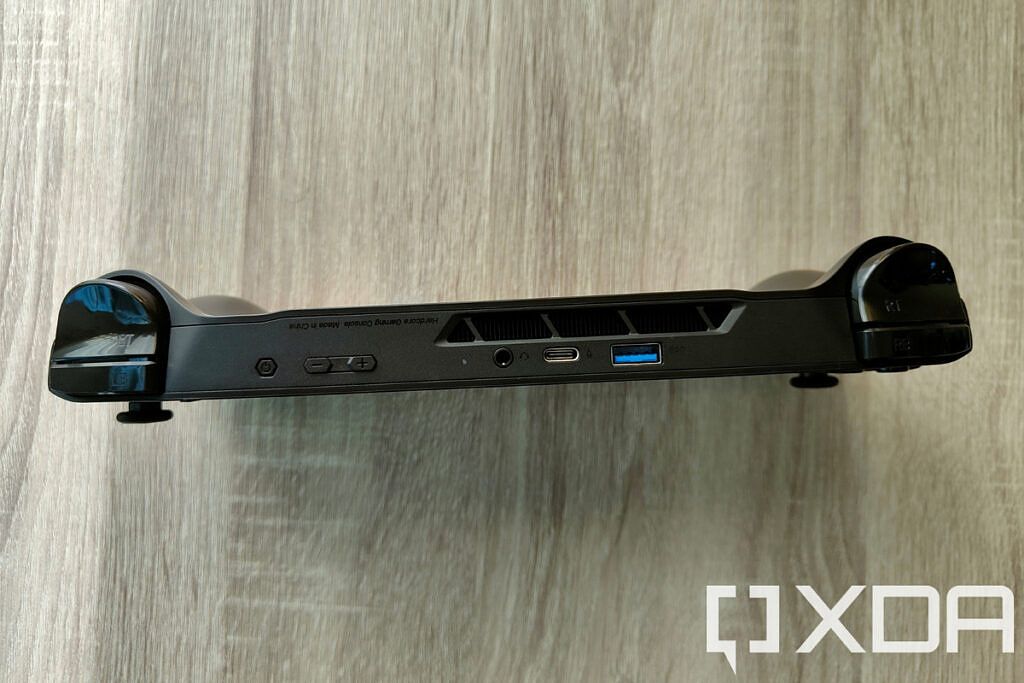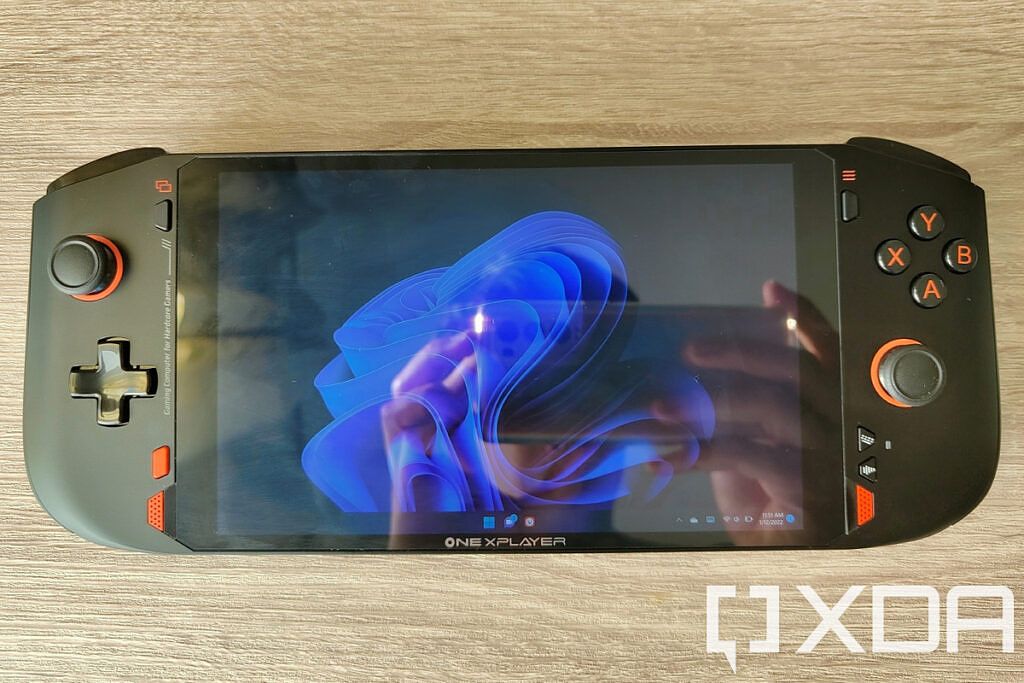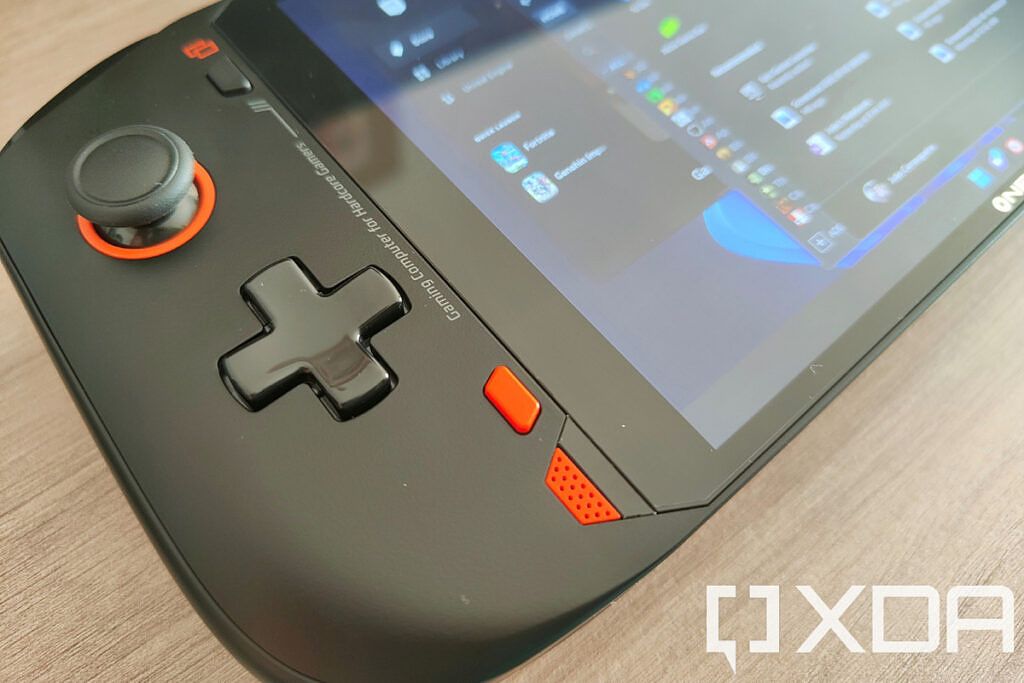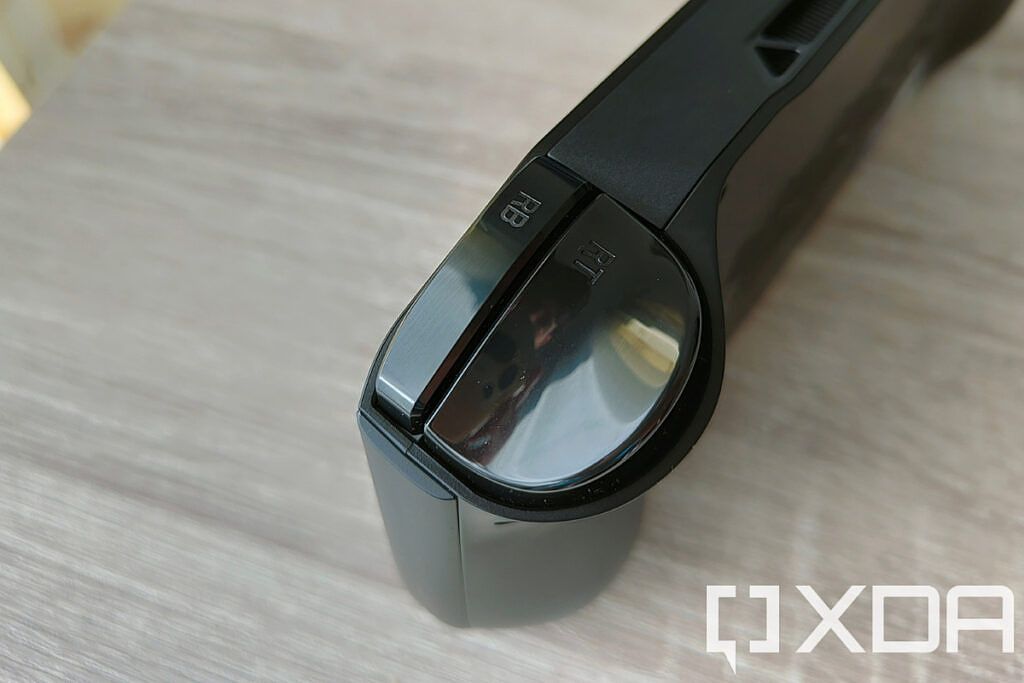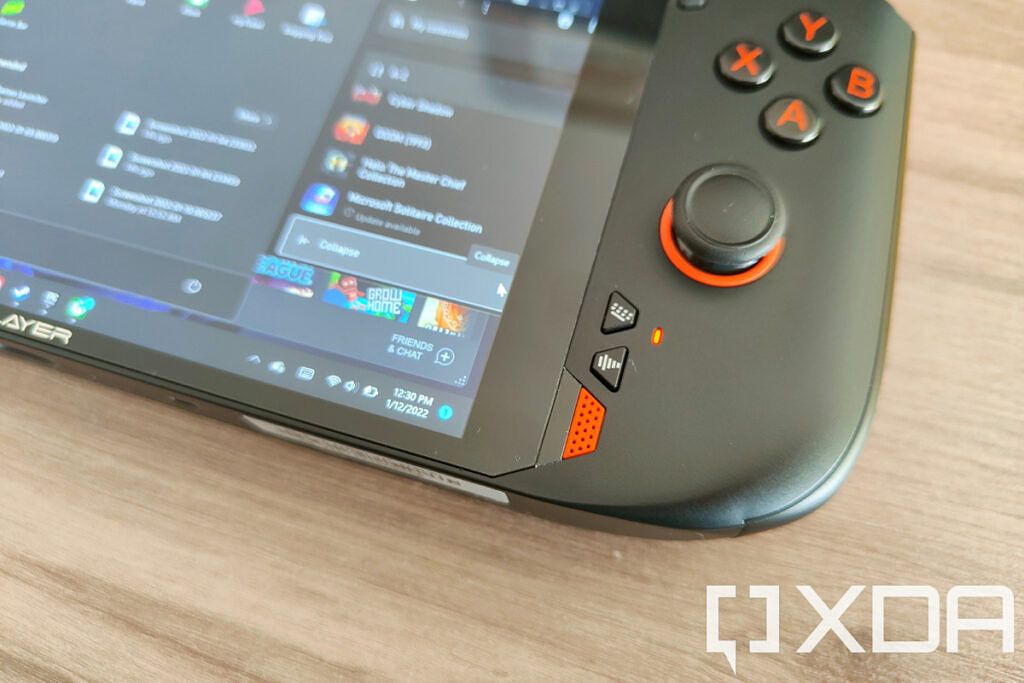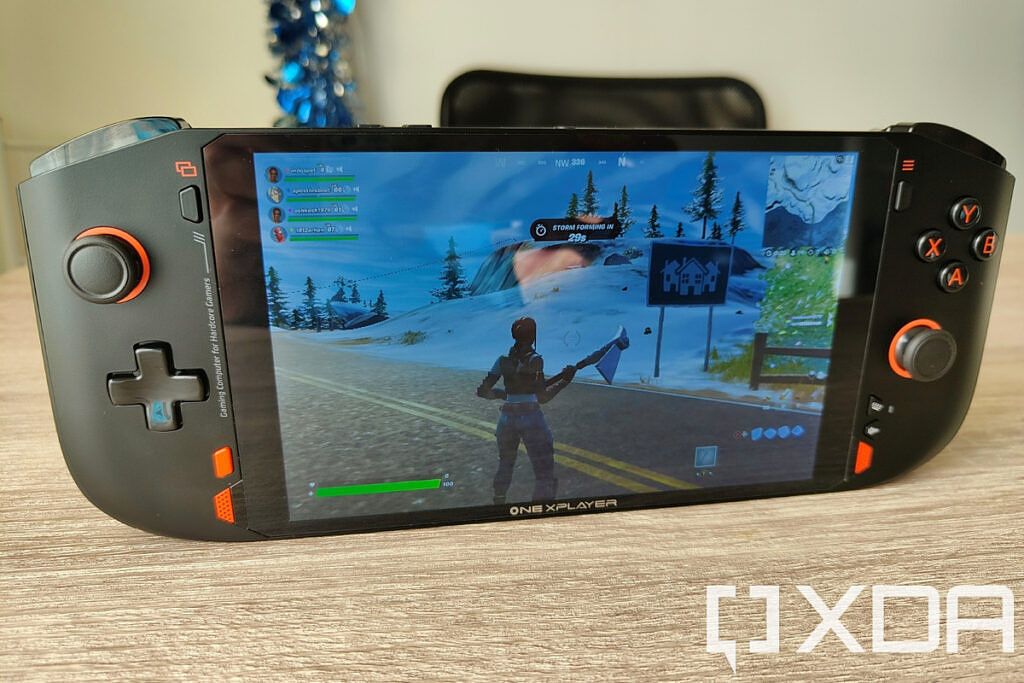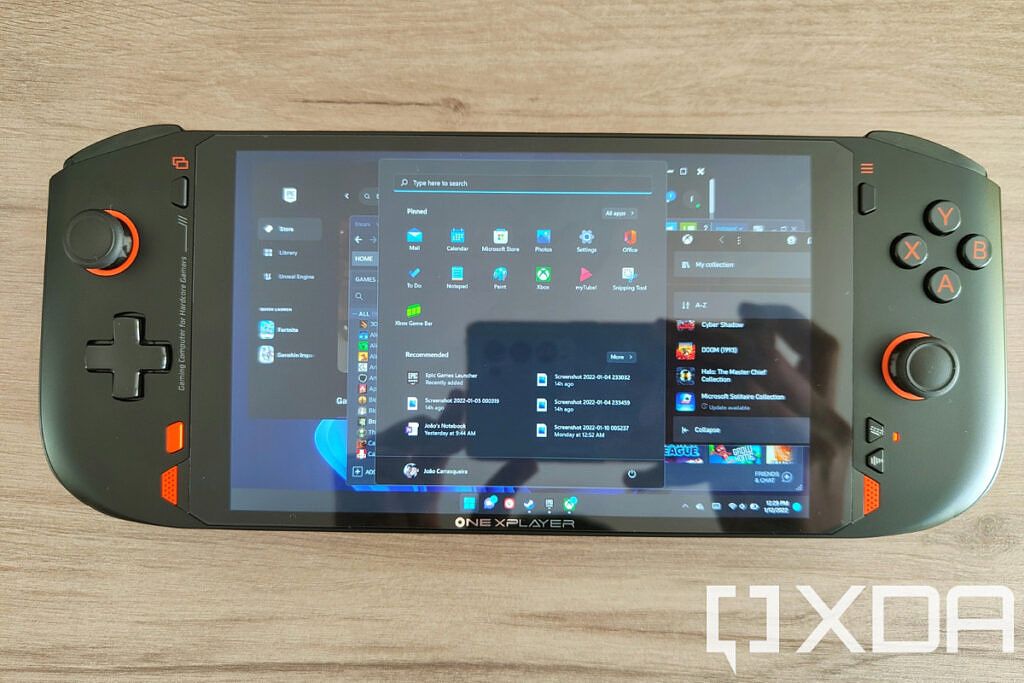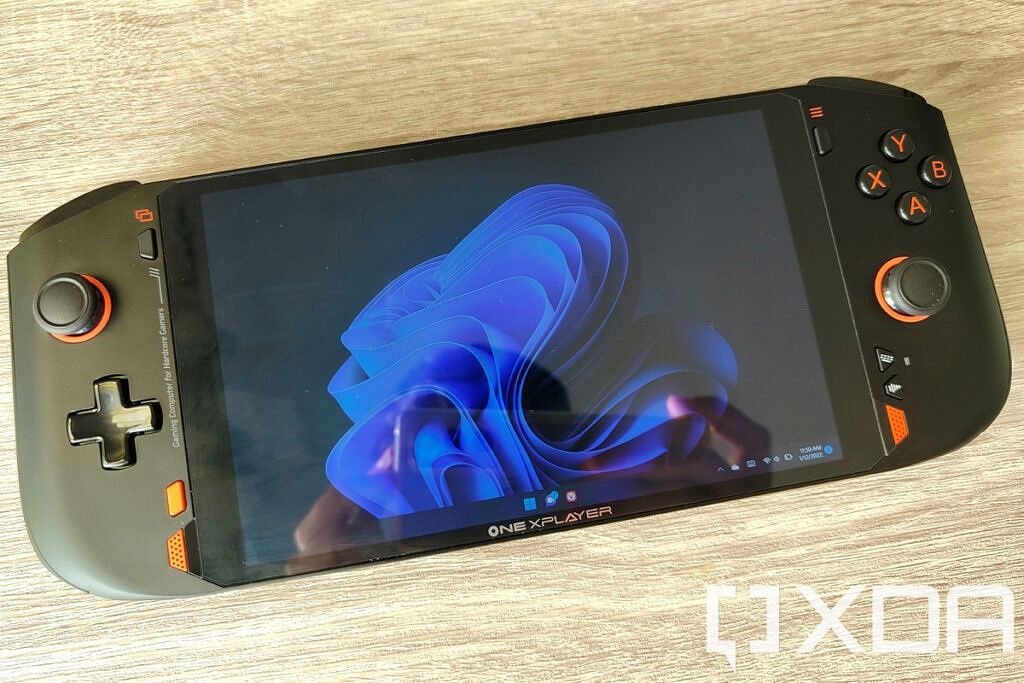It would be wrong to say that the Nintendo Switch was the first big-screen handheld console, but there's no denying that the sheer popularity of the system has prompted many more companies to create their own handheld gaming devices, often based on Android or Windows. Among the many devices trying to capitalize on the success of the Switch, we got the ONE XPLAYER last year, and now, the company is back with a more compact version, aptly called ONE XPLAYER Mini, and we're here to review it. This is a smaller model that's much closer to the actual size of the Nintendo Switch, while still offering a full PC experience and solid performance. Not just a response to the Switch, it's also trying to preemptively fight the Steam Deck, which is the first big-name effort of this kind that will actually come to market.
For a while, many of these handheld consoles were from relatively niche companies like GPD, but last year, it became clear just how much interest this concept has. Valve announced the Steam Deck last summer, and most recently, Qualcomm showed off the Snapdragon G3x Gen 1 platform. Granted, that's not a consumer device yet, but the intent is there. The ONE XPLAYER is still one of those more niche devices, but it's set up to compete with the Steam Deck, featuring similarly powerful specs and size.
To me, the important question is whether or not it succeeds in doing that, because it's clear that more people will be attracted to the reputation of the Steam brand. One-Netbook, the company behind the ONE XPLAYER Mini, has to prove that this is in fact a better option. Does it manage to do that? Read on to find out.
Navigate this review:
- Specs
- Design: It's so comfortable to hold
- Display and sound: It gets the job done
- Controls and buttons: It has great-feeling controls
- Gaming and performance: It can run games well, but not for long
- Do you want Windows on a console?
- Verdict: Is it worth it?
ONE XPLAYER Mini Specs
Design and ports: It's so comfortable to hold
One thing I loved about the ONE XPLAYER Mini during my review is its design. Not necessarily in terms of looks (though it looks quite nice), but how it feels to use. While it's a good bit heavier and larger than the Nintendo Switch (even the new OLED model, which weighs 420 grams), it doesn't get tiring to hold it in my hands, and the weight is evenly distributed, so it feels great. It feels more solid than the Switch, too, no doubt thanks to the unibody design that replaces Nintendo's detachable controllers.
One-Netbook, touts it as being much lighter and smaller than the Steam Deck, and I think that's a smart move. That's the device most people interested in the ONE XPLAYER Mini would be looking forward to, so it makes sense. While we have yet to try that device for ourselves, the Steam Deck does look huge and somewhat unwieldy.
It feels absolutely fantastic in the hand
The ONE XPLAYER Mini weighs a whole 81 grams less than the Steam Deck, and it's shorter in both width and height, which is great for portability.
It's not just a matter of weight and size, though. Unlike the flat design of the Nintendo Switch, the ONE XPLAYER Mini has sculpted handles on the back for your hands, and they're wonderful. I really can't think of another way to put it: It feels absolutely fantastic in the hand, with the molded design perfectly accommodating the way I would naturally rest my fingers on the back. It's great and I think it might help the device feel lighter than it actually is.
On the matter of looks, the ONE XPLAYER Mini follows the same theme the company has been using for its past devices. It's black with some orange accents on the buttons, speaker grills, and analog sticks. Orange is one of my favorite colors, so I'm probably biased in saying I think it looks very nice, but it does.
On the bottom of the device, there's a USB 4 Type-C port, which is used for charging as well as connecting peripherals, including external GPUs if you want to use the ONEXPLAYER Mini for more serious gaming. There will be a ONE XPLAYER dock at some point in March, but it's not available yet and I didn't get to review it.
There's another port like that at the top so you can choose whichever is more convenient for you, as they both support the same charging speeds and data. Additionally, there's one USB Type-A port and a headphone jack, as well as a power button and volume rocker at the top.
There's also a large exhaust vent at the top, which is paired with an even bigger intake vent on the back to keep things running cool. It's important to remember this is still laptop hardware, and it will run as hot and loud as a laptop would. This cooling system seems to do its job quite well, though.
Display and sound: It gets the job done
As we've mentioned already, the ONE XPLAYER Mini comes with a 7-inch display, and it's meant to go toe-to-toe with the Steam Deck, which has a similarly-sized display. The ONE XPLAYER Mini also has a 16:10 aspect ratio similar to the Steam Deck, but it comes with a sharper Full HD+ display, with 1920 x 1200 resolution. On paper, that sounds like a good thing, but I think it was actually a smart idea of Valve to use an HD+ display instead. Intel-based PCs burn through their battery quite quickly, and I think the sharper screen doesn't bring enough benefits at this size to justify the increased power consumption. We'll get to battery life later, though.
The screen looks just as good no matter what angle you look at it from.
In terms of the quality of the display, I think the 7-inch screen gets the job done fine, though I wouldn't give it any awards for its exceeding quality. It works well enough and it's definitely sharp enough being a Full HD+ display at this size, but it's not particularly vibrant, and there's always this faint feeling that the colors should be slightly more punchy. Viewing angles are fantastic, though, and the screen looks just as good no matter what angle you look at it from. It's also bright enough to use outside without much of an issue.
This screen also supports touch, a very welcome feature for what's essentially a Windows PC. Navigating Windows 11 with an Xbox controller alone is far from an ideal experience (one might say it's just impossible), and the touchscreen definitely makes it far easier to get to the games you want to play. Plus, you can use it for media consumption or web browsing in a pinch.
For sound, the ONE XPLAYER Mini uses two front-facing stereo speakers, hidden behind the orange speaker grills at the bottom. Similar to the display, I think the speakers here get the job done. They get decently loud at max volume, and there aren't any terrible qualities to them, but they don't stand out to me as particularly great. Comparing them to the Switch OLED model, I found Nintendo's console to be slightly crisper and louder. The ONE XPLAYER Mini is fine, though I expected better before this review considering it's a much larger and more expensive device.
Buttons and controls: The ONE XPLAYER Mini has great-feeling buttons
Back on a more positive note, let's talk about how it feels to actually control games on the ONE XPLAYER Mini. A good controller is paramount to a fun gaming experience -- much more so than the display, in my opinion -- and the ONE XPLAYER Mini felt fantastic throughout my review. The analog sticks and ABXY buttons feel very similar to my Xbox Wireless Controller (Xbox One model with Bluetooth), and that's a good thing. They're super smooth and comfortable to click, and the analog sticks actually feel a bit better here than on the Xbox controller, in my opinion. The D-Pad is much softer than the Xbox controller, but it's not mushy or anything, it still feels great and precise, but not as clicky. Again, I consider that a benefit.
The shoulder buttons are very clicky, and slightly louder than the Xbox controller, which is one area where I'd say the ONE XPLAYER Mini is slightly worse. The triggers are fantastic though -- they're analog and just as smooth (albeit not quite as silent) as the ones on Xbox, so they feel fantastic. Overall, playing games on this device just feels great. The menu buttons and the remaining face buttons are hard and clicky, which doesn't feel amazing, but you won't be using them that often, so I think it's fine.
There's a specific button here that I want to focus on, though, and that's the mouse/keyboard button. This is a big feature for when you're not gaming, or even for games that have less than optimal controller support. Pressing this button once brings up the On-Screen Keyboard in Windows 11, so you can type with the touch screen. Weirdly enough, it doesn't open the touch keyboard feature, it's the classic on-screen keyboard, which isn't as easy to work in many cases. However, it might be a necessity for some full-screen games that would stop the touch keyboard from appearing.
You can use the Xbox-style controls to move the mouse cursor.
However, holding down this button is even more interesting. This converts the Xbox controls into mouse controls, where the left stick moves the mouse pointer, the right stick serves as a scroll wheel, and the A and B buttons serve as a left and right click, respectively. This is also great for navigating the UI in specific situations. For example, Genshin Impact wouldn't let me use a controller until I could access the game's menu and it didn't work great with the touchscreen, so having a mouse feature built-in was super helpful in setting up the game.
Below this button is the Game Assistant button, and while I'd love to tell you about it, its not functional yet. It's supposed to let you change game settings on the fly, but One-Netbook tells me this feature will launch in March.
Gaming and performance: It can run games, but not for very long
Performance is the big thing handheld devices like this like to promote as a big advantage, kicking the Nintendo Switch down for its subpar specs. The ONE XPLAYER Mini is powered by Intel's Core i7-1195G7 processor, which is the fastest low-power processor in Intel's 11th-generation lineup. The CPU cores can boost up to 5GHz, and the integrated Iris Xe graphics have 96 execution units, which makes this a fairly capable PC that can run some relatively recent titles.
I tried running a few games on the ONE XPLAYER Mini during the review period, and the results were pretty solid with a few of them. Here are the performance measurements I observed for some of the games I got to try. All the games were running at native resolution in these measurements:
|
Game |
Graphics preset |
Framerate |
|---|---|---|
|
Brawlhalla |
Default |
60 FPS |
|
Call of Juarez: Gunslinger |
Max |
60 FPS |
|
Fortnite |
Low |
15- 30 FPS |
|
Grow Home |
Max |
50 - 60 FPS |
|
Halo 2 Anniversary |
Performance |
40 - 55 FPS |
|
Halo Reach |
Enhanced |
50 - 60 FPS |
|
Rocket League |
Quality |
55 - 60 FPS |
That's solid performance, and it means you should be able to run a good selection of games on this hardware, though more demanding titles won't work that well. I wanted to try Halo Infinite, but it simply wouldn't run because the GPU didn't meet the requirements.
Fortnite and Rocket League are also available on the Nintendo Switch, so I wanted to compare the performance between the two. In Rocket League, it's evident that the game runs a lot better on the ONE XPLAYER Mini, with higher frame rates and slightly better visuals overall. With Fortnite, though, I actually prefer playing on the Nintendo Switch. That version has a lot of textures popping in, but the 3D models look fairly sharp and the game runs smoothly for the most part at a stable rate. The PC version isn't as optimized for low-end hardware, so the frame rate fluctuates a bit, plus lowering the graphics settings makes the game look even less appealing than it does on Switch, with a lot of jagged edges.
For a more scientific measurement of performance, I did run the usual suite of benchmarks for this review of the ONE XPLAYER Mini. In this case, we ran the benchmarks while disconnected from power as well as connected, since both use cases are just as likely:
|
Benchmark |
ONE XPLAYER Mini (Battery)Intel Core i7-1195G7 |
ONE XPLAYER Mini (AC)Intel Core i7-1195G7 |
Dell Inspiron 14 2-in-1AMD Ryzen 7 5700U |
HP Spectre x360 14Intel Core i7-1165G7 |
|---|---|---|---|---|
|
PCMark 10 |
4,320 |
4,862 |
5,320 |
4,705 |
|
3DMark |
1,601 |
1,550 |
1,256 |
|
|
Cinebench |
1,467 / 4,117 |
1,453 / 4,016 |
1,233 / 7,768 |
1,314 / 4,039 |
|
Geekbench |
1,545 / 5,152 |
1,447 / 4,734 |
1,151 / 6,099 |
1,414 / 4,470 |
Oddly enough, most of the benchmarks turned out better results on battery power, but you can see it's on par with a typical ultrabook. Of course, you can always connect an external GPU to this device if you want to use it for desktop gaming, too.
Battery life is far behind the Nintendo Switch OLED model.
Being a PC with built-in Xbox controls also means you can use the ONE XPLAYER Mini for cloud gaming, and I tried this with Xbox Game Pass Ultimate. I mostly played Halo Infinite this way, though I also tried Forza Horizon 5 briefly. I have to say, cloud gaming is truly surprising for how well it works. There were times where the frame would sometimes take a while to refresh, but I never felt unbearable delays with the controls, and the experience was frankly great. If you want to play a game that can't run on this hardware, cloud gaming might actually be a good solution, as long as you have internet.
One thing that often seems to be overlooked with these x86-based PC/console hybrids is battery life. You may knock the Switch's graphics power, but it's an actual handheld console that can last a few hours at a time, particularly after the 2019 revision. The ONE XPLAYER Mini has a larger battery and better performance, but the actual battery life still falls far behind the Nintendo Switch OLED model, and that was evident in this review. Here are just a few measurements I took during my review period, including a comparison with the Switch OLED model at the end.
|
Game |
Battery life (H:MM) |
|---|---|
|
Halo 3 |
1:41 |
|
Halo Infinite (cloud) |
1:50 |
|
Rocket League |
1:38 |
|
Rocket League (Switch OLED) |
4:58 |
It's not even just 3D rendering that causes battery life to go down significantly. Playing the cloud version of Halo Infinite still drained the battery almost as quickly as other games that were played locally, and it's always a far cry from what you get with the Nintendo Switch. It makes it obvious that this kind of product is only really viable for burst sessions at home where you can plug in when needed, it's not something you can really rely on for longer trips. I think this is made worse by the Full HD+ screen, which is probably unnecessary. Like I said at the start, Valve was smart to go with an HD+ display instead.
Is Windows what you want on a console?
I wanted to include this extra section in this review because there are some important things to mention here. The ONE XPLAYER Mini ships with Windows 11, and that means that, out of the box, you get access to all the platforms that are available on Windows. You have Xbox, including Game Pass Ultimate with cloud gaming, Steam, Epic Games, or just download whatever you want from the web. It also means you can use this as more than a console and it doesn't require any fiddling.
The thing is when games are made for a console, they're kind of expected to work. PC games won't necessarily work with any computer, even if it's technically powerful enough to run it. For example, as you can see above, the ONE XPLAYER Mini handled Halo 2 Anniversary just fine during my review, but Halo CE Anniversary, which is actually less demanding, was unplayable. It ran at 5 frames per second, and changing the graphics settings didn't help at all. Bioshock Remastered -- a game that exists on Nintendo Switch -- also crashed constantly after a certain point in the game (which was very early), rendering the entire game basically inaccessible. That wouldn't really happen in a normal situation on a console.
Comparatively, Valve's Steam Deck ships with a custom version of SteamOS, and that locks you to the Steam ecosystem out of the box. It's still a PC, so you can install Windows 11 on it as long as you have a license, which you have to buy separately. SteamOS does come with advantages, though, with an adapted interface that's tailored to the controls built into the device. Valve has also stated that it's working to optimize Steam games to run on the Steam Deck as well as possible, so you shouldn't run into as many issues. You'll also be able to look for Deck Verified titles to make sure the games you're getting will run well.
The ONE XPLAYER Mini has no additional revenue stream after the hardware is sold, so it's far more expensive than the Steam Deck.
Including Windows out of the box adds a bit to the cost, too. It's not just that the Windows 11 license costs money, but Valve can also count on revenue from selling Steam games on the Steam Deck. That hardware is likely sold at a much lower price because it's subsidized by additional revenue from software sales, similar to how consoles work. The ONE XPLAYER Mini has no additional revenue stream after the hardware is sold, so the hardware itself is far more expensive. And it's fair to say that with Steam included you already have access to the majority of the most popular PC games, so the advantages of Windows aren't necessarily appealing to everyone.
Bottom line: Is the ONE XPLAYER Mini worth it?
The ONEXPLAYER Mini gets a lot right for those looking for a handheld gaming PC. It has an incredibly comfortable design, and it's not too heavy or overly large, so it's still somewhat portable. It also has great-feeling buttons, so playing games on it feels fantastic. It can run a handful of relatively modern games, and the ones it can't run can always be played via cloud gaming, which works really well.
I think the device makes some decisions that hurt it in the long run. The Full HD+ display is sharper than the Steam Deck or a Nintendo Switch, but it ends up having pretty poor battery life, which makes it less than ideal if you actually want to play games on a trip. Despite its higher resolution, I don't think it's a fantastic display, though it gets the job done.
The biggest problem with the ONEXPLAYER Mini is that it's facing stiff competition from the Steam Deck, which is the device it's essentially trying to stave off. Even for the same storage configuration, the Steam Deck costs $649, and the ONEXPLAYER costs $1,259. That's almost double the price, and you're not getting an exceedingly better PC. You get a Windows 11 license included with the ONEXPLAYER Mini, but it doesn't make up that huge difference. And even though you're getting a sharper display, that probably makes battery life worse, and that's something you'd probably value more in a handheld PC like this.
"(...) there isn't much work being done to optimize games specifically for this hardware."
It also faces the struggles any low-end Windows PC would face, such as compatibility issues with some titles. Running Windows 11 means it's just a normal PC, but that means you get the problems you'd face with a normal PC, and there isn't much work being done to optimize games specifically for this hardware. At the end of the day, I think this big investment isn't worth it over waiting for the much more affordable Steam Deck. If you feel differently, though, you can buy it below.
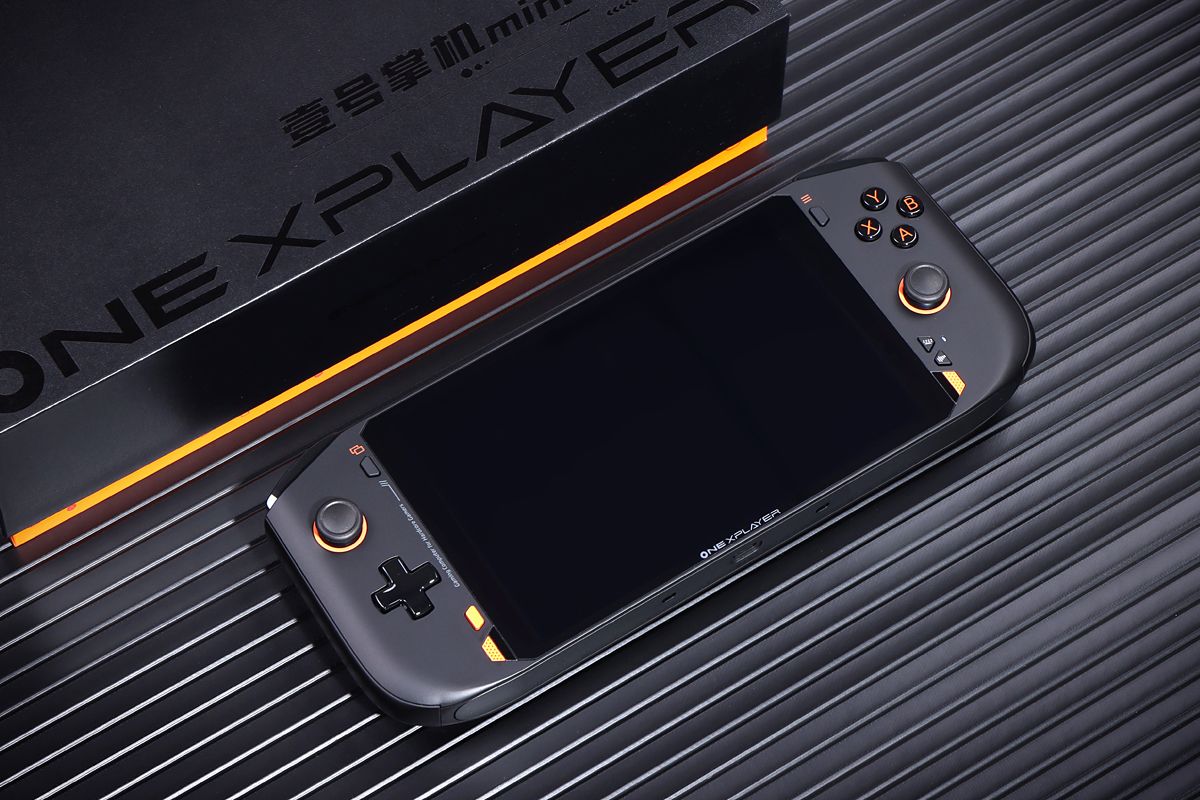
ONEXPLAYER Mini
The ONE XPLAYER Mini is a hanheld gaming PC with a high-end Intel processor and an incredibly comfortable design that's great for gaming.

